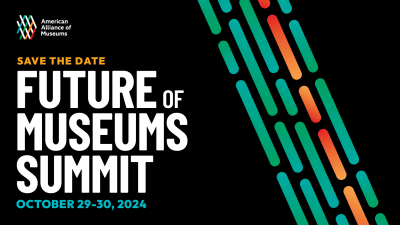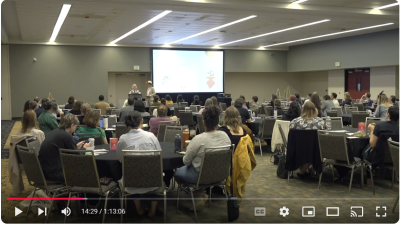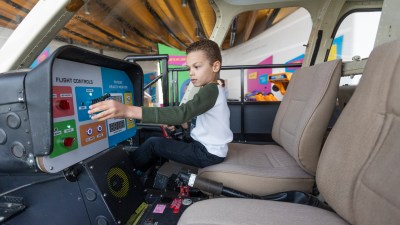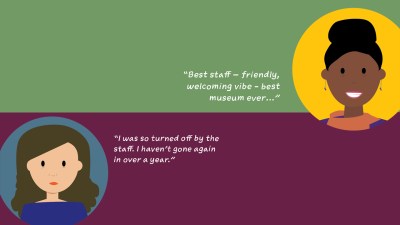
Many exhibition development teams are made up of curators and content specialists, museum leadership, and designers (3D designers, graphic designers, and sometimes in-house fabricators). On occasion, department heads or Board members join some of the project meetings. Rarely are the folks on the front line heavily involved in the numerous design and content decisions that they’re going to have to live with. These are the museum staff members who work most closely with the exhibits, the facility, and the visitors.
Don’t close the door on those with the most to offer. Here are 6 museum team members who should be consulted during every new and renovated exhibition project.
1. Floor Staff & Docents – It’s a museum’s Boots on the Ground who understand, better than anyone else, how visitors behave. Volunteers, docents, and other floor staff not only watch visitors, but interact with them, answering questions, helping them with directions, and listening to what they’re excited about…or confused by. If you’re looking to update exhibit content or improve wayfinding, talk to staff members who “live” in the exhibits to find out what guests really do and need.
2. Education Department – Like Floor Staff, members of a museum’s Education Department also enjoy one-on-one interactions with visitors, doing demonstrations and leading programs. They also have relationships with local teachers, and understand the needs and nuances of field trips; from the insanity of lunch bags and winter coats to connections between the exhibition content and the State’s core curriculum requirements. They’re an invaluable resource during exhibition planning.
3. Museum Operations – Once an exhibition design is completed and open to the public, someone still needs to take care of it and work around it. A museum’s operations and facility team is the group behind the curtain, and it’s imperative to get their feedback at numerous points during an exhibit design process. They’ll share input regarding material durability, power, and data access, cleaning concerns, ceiling access, life safety, and more.
4. Exhibit IT Specialists – It seems like everyone wants the latest technology in their exhibits. AR, VR, apps, gesture recognition experiences, multi-touch tables, etc. But who’s going to maintain it? And who’ll repair it when it goes down?…because down it will go, at some point. Before a major investment in hi-tech exhibits, get input from the museum IT Department or in-house exhibit technicians. Find out if the technology being considered is something the tech team is familiar with, and get them involved in planning how to take care of it for the long run.
5. Development Staff – Oddly, in many museums, it’s the person or team raising money for new exhibitions that is most often kept at arm’s length from the creative design process. Getting the input of individuals from the Development team goes deeper than just hearing, “I have a potential donor that wants x-y-or-z.” They’re also aware of trends and content highlights that donors and Board members are inspired by. Ask them!
6. Visitors – Of the many quotes Steve Jobs is known for, one of his most famous is, “People don’t know what they want until you show it to them.” That may be true for consumer electronics, but for the most part, museum-goers know exactly what they want, which is why they’ll choose one museum over another. Ask your audience what they’d like to see, learn, and experience more of. Ask them what they think about your exhibits. At every stage of exhibition design, talk to your visitors.
Skip over related stories to continue reading articleSteve Jobs also once said, “Great things in business are never done by one person. They’re done by a team of people.” And this certainly applies to the creation of successful museum exhibitions. Because most museums are made up of staff with wildly different expertise, backgrounds, and viewpoints, it makes sense to invite them to the table so that the curators and creative team—and the exhibition—benefit from their valuable perspectives.
Are there other museum staff members or folks in the community with whom it’s valuable to connect during an exhibit design process? Did I miss anyone? I’d love to hear your thoughts. Please add your comments to this page, or feel free to send me an email.
David Whitemyer is the Director of Business Development at Luci Creative, an exhibit and experience design firm, and an instructor in Johns Hopkins University’s Museum Studies program. He can be reached at david@lucicreative.com








The one group I don’t see here are non-visitors — all those community groups and “diverse” audiences who we have trouble attracting in the first place. If an object story gets told in the woods and no one’s there to hear it does it make a sound? I love the appeal for breaking out of our own internal silos to get better at designing authentic and engaging experiences. But I think there’s even more to be learned when we break out of our museum walls.
Nice and Concise, David. Thank you! I would add Event Coordinators to this list as well; that staff person/people or department that books the spaces for events such as lectures, weddings, and parties of all kinds. Oftentimes, these rental groups desire to be immersed in the museum, but sometimes the exhibit design does not anticipate the need to set up and accommodate formal functions. In our projects, we’ve had to develop floorplans with table layouts illustrating how many can be seated in a gallery. Had we known the exhibit hall was also the function hall, we would have designed things a little differently from the outset.